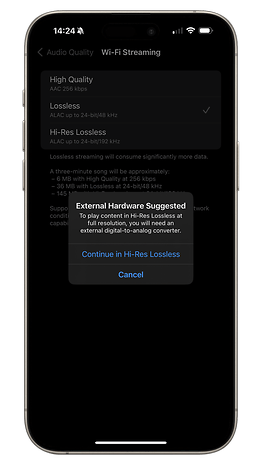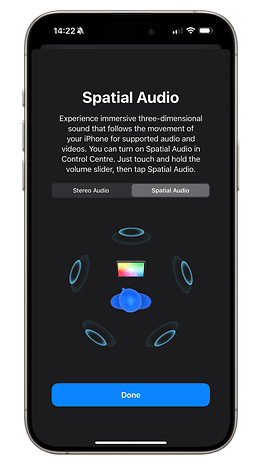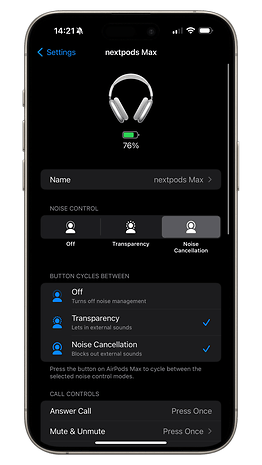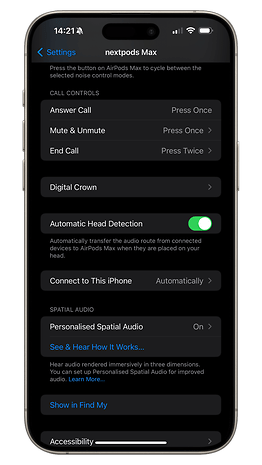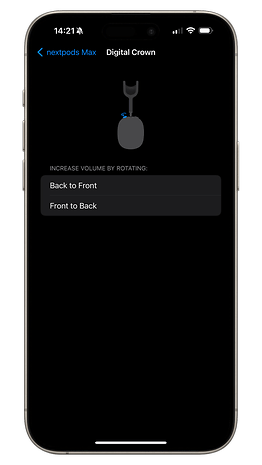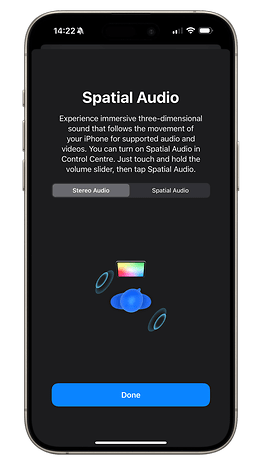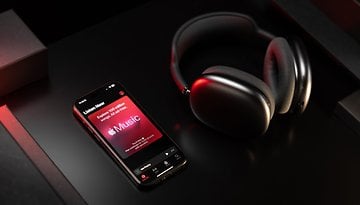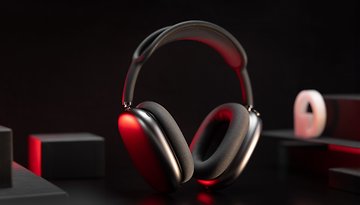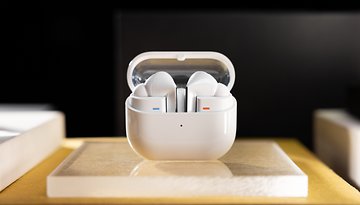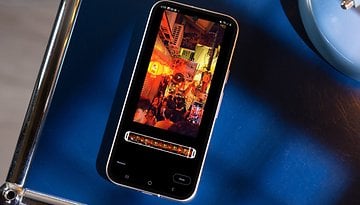Apple AirPods Max Review: Looks (and Price) That Simply Don't Age
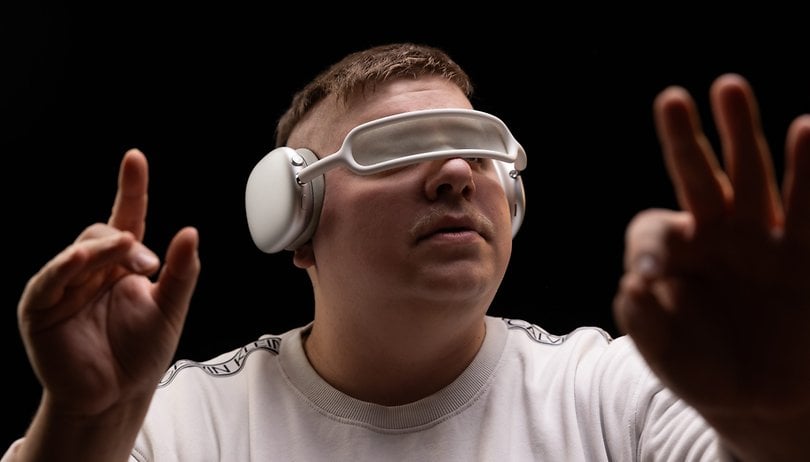

While everyone is testing the Apple Vision Pro, I'd like to offer you an AirPods Max review, almost four years after its release. Apple's wireless headphones with active noise reduction still cost $550 in 2024. The AirPods Max has many qualities, but also far too many flaws for its exorbitant price to be forgivable. I give you my honest opinion of Apple's audio (not VR) headset in this comprehensive AirPods Max review.
Good
- Premium design that hasn't aged a day
- Good audio quality
- Excellent active noise cancelation
- Good battery life
Bad
- No lossless audio on Bluetooth and complicated on wired connections
- No IP rating
- No manual equalizer
- Headset never turns off
- Multipoint only with Apple devices
- Difficult to use on Android/Windows
- Price still high 4 years after release
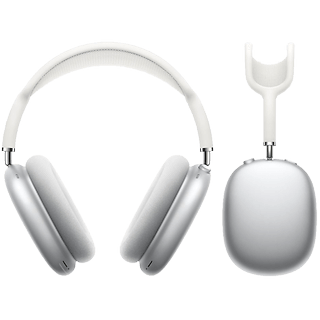
Reviews and buying guide
If you were expecting me to rant all through this review about the price of the AirPods Max, you've come to the wrong place. I've wasted so many hours writing mood posts about the Apple brand's pricing policy, to no avail. Apple products are expensive, that's just the way it is. And I think the AirPods Max 2, due out at the end of the year, will be just as expensive.
In any case, Apple's AirPods Max remains a very good wireless headset. Its active noise reduction is simply excellent. Its design is far more premium and polished than most of its high-end rivals. Audio quality is nothing extraordinary, and the sound is clearly not "Hi-Res". But it's still very decent.
The AirPods Max has many qualities. But it also has a lot of flaws. Flaws that are sometimes quite prohibitive, even if you ignore the exorbitant price tag.
I'd also add that if you intend to use the AirPods Max with one or more non-Apple products, it's clearly not worth it. But I'll talk more about that below.
Design
Apple's AirPods Max is the most premium consumer headset I've tested. Apple limits the use of plastic in the design of its Bluetooth headset, favoring aluminum and steel. The AirPods Max is visually classy and stands out from its plastic competitors from Sony, Sennheiser, or Bose. However, this meticulous design is far from durable, which is a shame considering its price.
Pros:
- Premium, modern design, even in 2024.
- Very comfortable to wear.
- Well-thought-out, responsive physical controls.
Cons:
- No IP rating for water and dust resistance.
- Aberrant case design.
- No on/off button.
- Mesh fabric on earcups and headband are very messy.

A modern look that hasn't aged a day
I love the sleek, airy look. The squircle-shaped earcups are made of aluminum. This is an Apple review, so I have to show off a bit with neologisms. Their ear cushions are covered with a mesh fabric that's rather unpleasant to the touch, but more breathable and comfortable than the leatherette we're used to on conventional headphones.
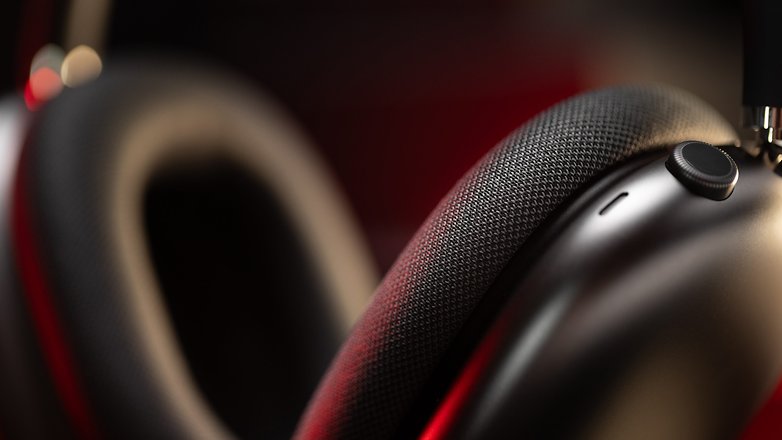
The arms of the headband are made of stainless steel, and the mechanism for enlarging/shrinking the headset is visually very discreet. It's also quite firm, requiring two hands to stretch the headband.
The headband is covered with a kind of silicone on the temples. The temples are linked by a mesh mesh that lets your scalp breathe.
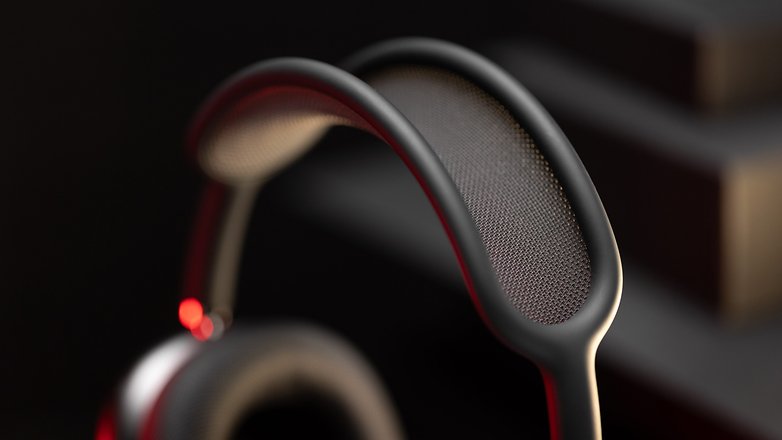
The crown-shaped control button, inspired by the one on an Apple Watch, is highly responsive, and the feedback from the mechanism feels very firm and precise. It's a very good choice on Apple's part to have opted for physical rather than tactile controls.
So yes, the AirPods Max is a beautiful Bluetooth headset. Its design remains modern even in 2024. It's also very comfortable, and its weight of 385 g isn't felt at all. But it's not durable at all.
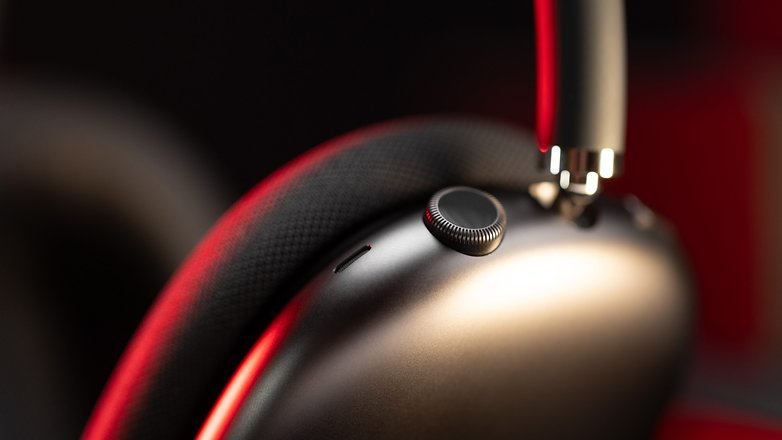
The AirPods Max is very messy and not very durable
The mesh of the ear pads and headband is very messy. The mesh of the headband distorts over time and looks like an old fishing net. The unit I was lent has been in daily use for several years by a person who takes great care of his belongings. In spite of this, the headset looks rather grimy.
And if you want to replace your AirPods Max ear cushions, you'll have to pay $69 for a pair from the Apple store. And as for the headband mesh, it's not designed to be interchangeable. So you'll have to go through Apple Care. I suppose you could always try cleaning them by hand, with a brush and a little detergent.
After all, the imitation leather used by competitors isn't much more durable either. The rubber also crumbles over time. But for a Sony or Bose alternative, replacement pads cost around $30, not $69.
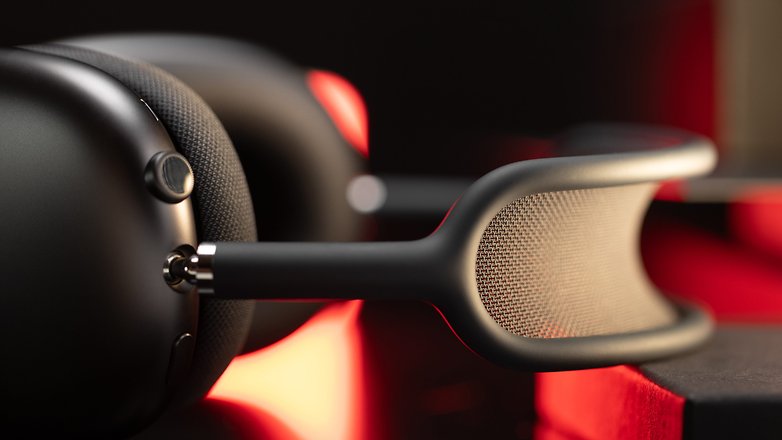
The AirPods Max has no certification for water or dust resistance. The headset is equipped with nine microphones. These are certainly not sealed with glue or gaskets. Given the price, it's best not to test its water-resistance, even in very light rain.
Why doesn't Apple sell a special little hat for AirPods Max at $499? I'm sure it would sell well. A mesh bob that doesn't wash out and has to be replaced every 6 months.
Another aspect of the AirPods Max's design that bothered me: The magnetic ear pads. I found the attachment too fragile, and I think the risk of losing a pad when carrying the headphones around is pretty high.
Finally, I think it's a shame that the headphones can't be worn comfortably around the neck. In reality, there's not much point, because the headset doesn't switch off automatically while you're on the move. And maybe it's my fat neck that's the problem. But I would have liked to be able to let it rest around my neck. The earcups can't even be laid flat unless you put the headset upside down.
From a manufacturer that invented the mouse that charges from underneath, I appreciate the consistency, but I also regret the persistence of these design choices.
Audio quality
What about the audio quality of the AirPods Max? Is the sound worthy of $550 headphones? No. Is the sound Hi-Res? No. Does Apple Music's lossless audio make sense with these headphones? No. But whatever the purists say, the AirPods Max offers very good audio quality for the basic user.
Pros:
- Very good audio quality.
- Lightning to USB-C cable included.
- Good quality microphones for calls.
Cons:
- No lossless Bluetooth option.
- Lossless is hard to achieve with a wired connection.
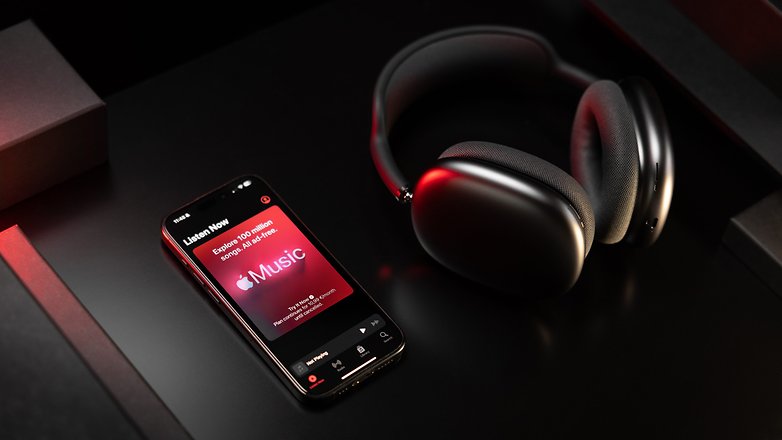
Good audio quality not worth 550 bucks
The AirPods Max integrates 40 mm drivers and transmits audio via Bluetooth using the AAC codec. It's very basic. This configuration is found in most high-end and even mid-range headphones. The AirPods Max doesn't even benefit from the excellent performance of the H2 chip found in the AirPods Pro 2.
Apart from that, the audio profile of the AirPods Max is a little low, which doesn't bother me, on the contrary. The rest of the musical spectrum is quite precise. The midrange is a little shy in places, and there are a few peaks in the treble, but they never get in the way. No strident sounds, even at high listening volumes.
I find that the headphones have a tendency to bleed, which means that people around you can hear your music if you push the volume a little too high. It's also impossible to use the headset passively, i.e. "switched off" and wired, without audio processing. The H1 chip in AirPods Max needs to be constantly active.
In short, the audio quality is fairly balanced, with a little more emphasis on bass and treble frequencies than on the rest. It's all very classic, and that's fine. But don't expect an audiophile experience, despite the $550 price tag.
Can I listen to lossless music with AirPods Max?
No, even if you activate lossless or lossless Hi-Res quality in your Apple Music settings, you won't be able to enjoy it with the AirPods Max. I know that Apple's information page on this subject is (deliberately) very confusing. But no, the AirPods Max is not capable of transmitting CD-quality or lossless Hi-Res tracks over Bluetooth.
If you want to listen to lossless music with the AirPods Max, the only solution is to use your AirPods Max wired. The problem is that Apple's USB-C to Lightning cable included with the AirPods Max doesn't allow you to listen to your music. It only recharges the headphones wirelessly.
If you have an iPhone 15, you'll need to buy two components. The first is a 3.5 mm jack to Lightning cable and a USB-C to 3.5 mm jack adapter. Then you need to connect the USB-C end of your adapter to your iPhone, connect the 3.5 mm jack end of your cable to the 3.5 mm jack end of your adapter and finally connect the Lightning end of your cable to your AirPods Max.
If you have a device with a 3.5 mm jack port, such as a MacBook, you don't need an adapter - the cable is all you need. But even then, you'll still need an external DAC to get the best quality Apple Music has to offer.
I'd need a whole article to explain everything properly. I'll try to keep things as simple as possible with my meagre knowledge.
Your music is digital data. The speakers in your headphones and earphones only work with an analog signal. When your music passes from your source (smartphone/PC/tablet) to your headphones, you need to convert the signal from digital to analog. That's where the DAC comes in. It's a digital-to-analog converter.
Your PC, smartphone, and even AirPods Max all have a built-in DAC. But to use the AirPods Max in wired mode, you need not only a cable, but also the adapter I mentioned above. Hold on to your hats, because here comes the tricky part.
Because sound quality also depends greatly on your source. And that's why you may need an external DAC.
Is an external DAC essential for listening to lossless music with AirPods Max?
The problem is that not all DACs are created equal. The DAC in your iPhone 15 will perform not so well next to the one in your 14" MacBook Pro. Audio files of different qualities have different bit rates.
The higher the bit rate, the better the quality of the track. And with higher bit rates, you need higher-quality audio conversion. Apple Music, for example, is capable of producing tracks at very high bitrates, some even reaching the heights of 24-bit at 192 kHz.
You won't get those bitrates with Bluetooth. Nor will your iPhone's DAC necessarily be sufficient. For example, to my knowledge (correct me if I'm wrong), the internal DAC of the iPhone 15 is limited to 24-bit at 48 kHz output.
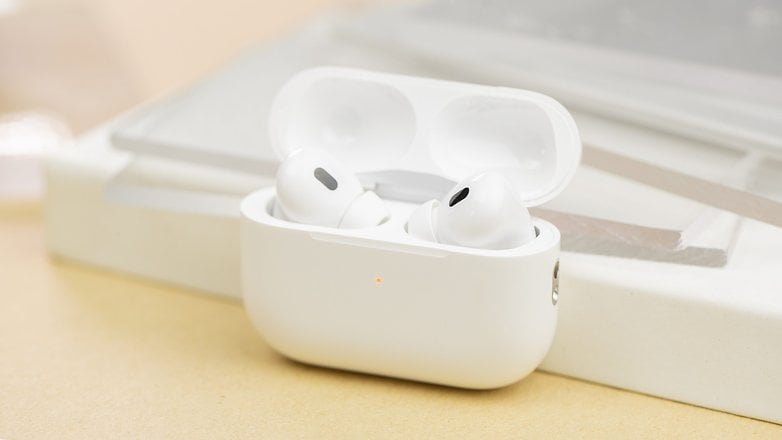
Basically, if you connect your AirPods Max to your iPhone via the cable mentioned below, you should notice better audio quality. But to really benefit from the very best that Apple Music has to offer (Hi-Res lossless in 24-bit at 192 kHz), you'll need an external DAC. Apple itself indicates this in the Apple Music settings.
The price and quality of external DACs vary widely. If you can afford an AirPods Max at $550, you can surely afford an audiophile DAC.
Unfortunately, I don't know which portable external DAC to recommend for an iPhone 15 and an AirPods Max. I'd have to order several models to test them out. There are lots of different models at different prices. Some portable DACs can also connect directly to your iPhone via USB-C or Bluetooth. And then there's the question of amplifiers built into DACs. But that's a niche I only know a little about.
Active Noise Reduction (ANC)
AirPods Max features active noise reduction. It is not manually adjustable. But that's this headset's biggest strength. The AirPods Max is perhaps the best wireless headset in terms of active noise cancelation (ANC). The transparency mode is also among the best on the market.
Pros:
- Excellent active noise reduction.
- Very natural transparency mode.
Cons:
- -
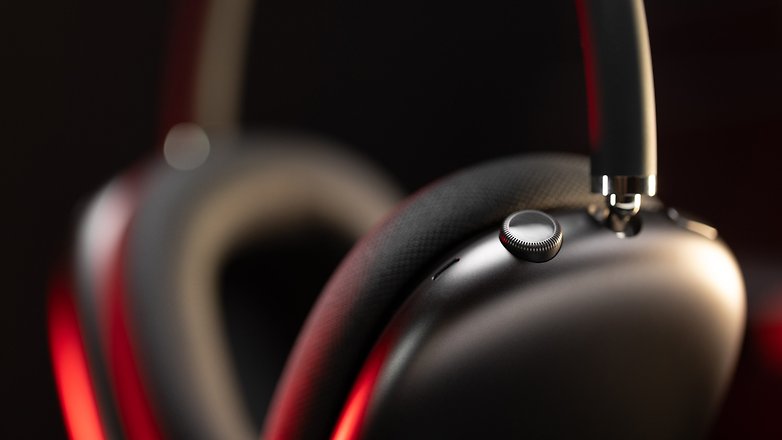
I've already lost 80% of my readership after that gargantuan "Audio Quality" section above. So I'm going to go very quickly. The AirPods Max is without a doubt the best Bluetooth headset in terms of active noise reduction.
In my opinion, it was the Sony WH-1000XM5 that occupied this position. Unfortunately, Sony doesn't let us keep test models for long. So I wasn't able to make a direct comparison. That's why I have this slight reservation about the AirPods Max.
But Apple's active noise reduction is simply impressive. Whether in the office, on the street, or on public transport, you can't hear a thing. Virtually all ambient noise is effectively attenuated. These range from constant, solid-borne noises (engine noise, whirring) to more aerial noises (doorbells, human voices).
This is an absolute success for Apple, and a real pleasure to use if you like to cut yourself off from the world. It's all the more impressive in that passive isolation is very low (when you just put the headphones on your ears, without software processing).
The transparency mode is just as convincing. What really surprised me was the naturalness of the ambient sounds amplified by this function. You don't feel like you're wearing headphones. No distortion, no hiss. Again, very good.
Finally, spatial audio is also very effective. I won't dwell on it too much in this test, since the function isn't so new anymore. But Apple remains the undisputed champion in this field. Head movement tracking is excellent. And with songs specially designed for it, or movies and videos, it's really fun to use.
Features and applications
AirPods Max doesn't work with a companion app. Everything is managed via the headphones and settings on your iPhone, iPad, or MacBook. The integration of AirPods Max into the Apple ecosystem is hyper-intuitive. But I find Apple's headset too limited in functionality. I find it almost unusable on Android or Windows.
Pros:
- responsive, intuitive physical controls.
- Smooth pairing with an Apple product.
- Efficient multipoint connection between two Apple devices.
Cons:
- No multipoint with non-Apple devices.
- Difficult to use on Android and Windows.
- Headphones can't be turned off.
- Physical controls not highly customizable.
- No equalizer.
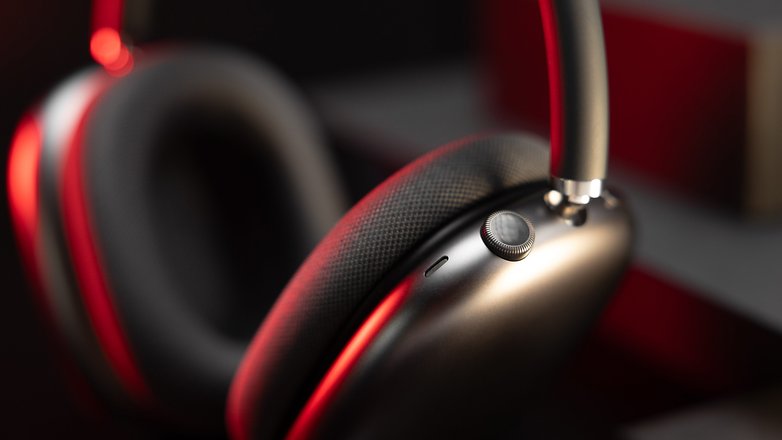
The AirPods Max offers all the features I'd expect from a high-end wireless headset. A port sensor, automatic music pausing, and a multipoint connection.
The port sensor works very well, even too well. A simple scratch of the ear is enough to automatically pause your music. It's rather irritating in the long run. Fortunately, you can deactivate it in the iPhone settings.
I also appreciate that Apple has opted for physical rather than tactile controls. Of course, the controls aren't very customizable—this is Apple, after all. All in all, there are two buttons to control everything.
The first is the rotating crown, which allows you to change the volume precisely. You can even change the direction of rotation in the settings. A single press on the crown pauses playback. A long press activates Siri.
The second is a simple button that toggles between active noise reduction, transparency, and normal profile. A long press on this button switches to pairing mode. You can also assign a single and double press to manage your calls (pick-up, mute, etc.).
And that's all. No, no on/off button. The AirPods Max never really switches off. Instead, Apple offers two different standby modes. If you put your AirPods Max down and don't touch it for 5 minutes, Apple's wireless headset goes into standby mode. You can also opt for a "deep" sleep mode. To do this, put your AirPods Max in its storage case. The AirPods Max will also go into deep standby if you leave it untouched for 72 hours.
This can be a handy feature, and it works very well on iOS. But it also means that if you don't put Apple's headset down flat, or wear it around your neck, its built-in gyroscope and accelerometer (for head tracking, among other things) will detect movement and the headset will simply drain its battery.
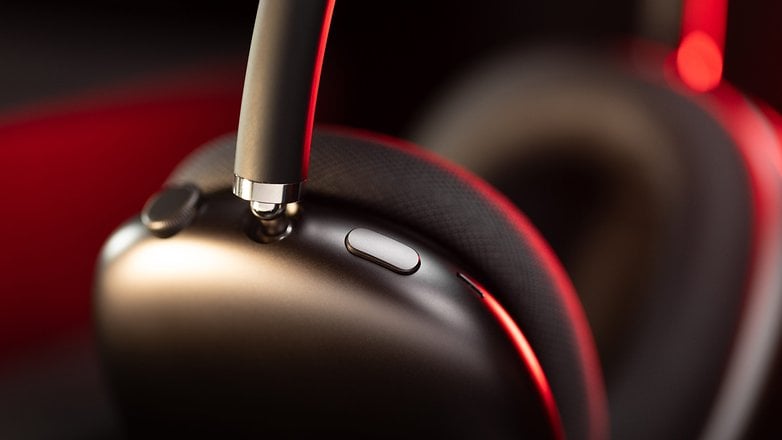
Can I use AirPods Max with an Android smartphone or Windows PC?
Yes, you can pair the AirPods Max with an Android smartphone or tablet, as well as a Windows PC. Noise reduction works, and so do the headset controls (except for voice assistants other than Siri).
But honestly, I wouldn't recommend using AirPods Max with non-Apple products. Port detection doesn't work, for example. Spatial audio doesn't work either. Ditto for "multipoint", which only works between two Apple devices, nothing else. Finally, you won't be able to see the remaining battery level of your AirPods Max on Android and Windows devices either.
Autonomy and recharging
The AirPods Max offers a battery life of 20 hours with active noise reduction or Audion Spatial activated, according to Apple. Also according to the manufacturer, a 5-minute recharge provides the equivalent of 1h30 of listening time.
Pros:
- Autonomy just right for this price range.
- Charging cable included.
Cons:
- Headphones cannot be turned off to conserve battery life.
- Impossible to use headphones in passive mode.

This 20-hour battery life is pretty average for a high-end wireless headset. The Bose QC Ultra Headphones reaches 24 hours, while ANC is still active on these headphones. The Sony WH-1000XM5 pushes its autonomy to 30 hours with ANC and 40 hours without. The Sennheiser Momentum Wireless 4 even manages to offer up to 60 hours of autonomy.
In itself, these 20 hours of autonomy are more than sufficient for most uses. Having a longer battery life simply makes it more comfortable not to have to recharge the headphones all the time.
But for a top-of-the-range headset, I expected better. On a positive note, however, my boss Fabien, who has been using AirPods Max for several years, confirmed that he hadn't noticed any drop in autonomy over time. That's already a good thing to know.
Finally, the fact that it's impossible to turn off the headphones completely doesn't really help preserve the AirPods Max battery. I also regret that it's impossible to use the headset "passively", i.e. wired and without battery use. The AirPods Max needs its H1 chip to be permanently active in order to function.
Conclusion
Would I advise you to buy the Apple AirPods Max at $550 in 2024? In absolute terms, no. The AirPods Max doesn't offer good value for money. No, I don't think its price on the Apple store is justified. And yes, even with the iPhone 15 Pro Max that I use daily, I'd rather use a Sony WH-1000XM5.
I'd only recommend it if you're already well immersed in the Apple ecosystem, and if you value the intuitiveness of that ecosystem over value for money.
Even in 2024, the AirPods Max is still a very up-to-date and competitive wireless headset for an Apple user. Active noise reduction is excellent, perhaps the best on the market. Audio quality is very good for a consumer, non-audiophile headset. Using AirPods Max with an iPhone, iPad or MacBook is hyper-intuitive. Spatial Audio remains a cut above the alternatives offered by the competition.
So if you've already spent $3,000 on a MacBook Pro or $1200 on an iPhone, the AirPods Max's $550 price tag shouldn't be an obstacle.
If you're an Android user, pass. The headset is too limited from a functional point of view. And I remain convinced that wireless headphones like the Bose QuietComfort Ultra remain a better alternative, even for iOS users. Bose and Apple have a beautiful harmony in terms of integration.

